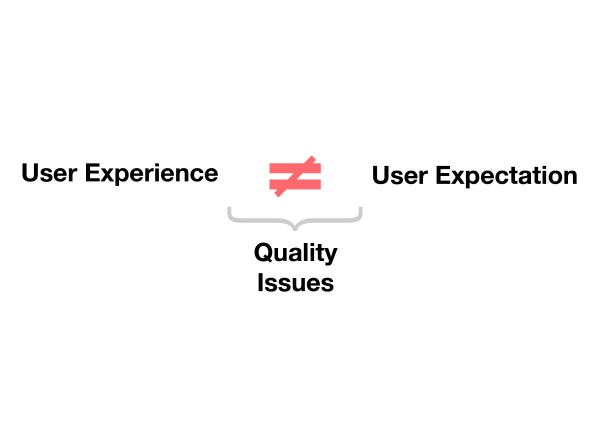What is a Quality Issue?

Product quality is an essential component of success for every business. The most effective way to drive product quality and business growth is to listen and act on user feedback. Users are constantly reviewing your product and have the most valuable feedback when it comes to its quality. Their insights hold a lot of weight because they’re seeing the best and worst of your product. They use the product regularly so they’re most in tune with what’s working, what’s not working, and what can be improved across various devices. More often than not, they share feedback across multiple channels like social platforms, review sites, or directly to an organization’s user support channels. When businesses take this data into account and apply it to their product quality efforts, they’re earning user loyalty and driving retention. If product quality efforts are neglected, businesses are essentially inviting increased churn and the organization will ultimately feel the impact. While it’s critical to leverage user feedback across multiple channels, businesses are faced with the difficult process of both combing through large volumes of user feedback and correctly identifying the quality issues that will have the greatest impact on their product.
User Feedback Data Challenges
Nothing comes easy, and that’s especially true with taking a data-driven approach to product quality. First, businesses have to contend with the volume of noise. As user feedback data accumulates across channels, regions, languages, devices, and software variations/versions, noise increases. The process of manually reviewing feedback from every channel is not only overwhelming but ineffective. And even with a streamlined approach, teams are confronted with another challenge. It’s exceedingly more challenging to identify and work on mission-critical quality issues. There’s a lot that goes into the process after you’ve collected the feedback. For starters, there’s the context of each piece of feedback, various articulations, and sentiment. There’s also a language component to consider when evaluating feedback outside a reviewer’s primary language. If any aspect is neglected, teams are left with a scattered approach that has minimal influence on the product and growth metrics. In addition, they miss key elements such as true impact, scope, and causes of product issues. Teams need quantitative data so they can effectively understand, prioritize, and act on the right user issues at the right time.
Identifying and Analyzing Quality Issues Data Challenges
unitQ Monitor analyzes user feedback across channels and languages using machine learning. As it’s processing user feedback, the platform reduces user feedback noise while determining the sentiment and root cause behind product quality issues. It’s then able to quantify KPI impact of Quality Issues identified. Diving a little deeper into Quality Issues, our models are able to identify reports of disconnect between user expectations and what the product actually delivered. unitQ Monitor can parse out complaints and opinions from quantifiable product quality issues.
Quality Issue Examples
Let’s look at an example:
Feedback A
I cannot log in.
Feedback B
I cannot log in because I forgot my password.
Feedback A indicates that a user cannot log into the product. The user expected to be able to log in and cannot due to a potential product issue. Feedback B shows user feedback that is based on user error. The user forgot their password and cannot log in for a reason unrelated to the product’s quality.
Here’s another example:
Feedback A
My account was randomly suspended.
Feedback B
I removed my account by pressing the wrong button.
Feedback A shows a user was surprised when their account was unexpectedly suspended, this could be due to a product bug or glitch. Feedback B shows no indication that there’s an error with a product but rather implies that the user would like their account removed.
Act on Quality Issues to Improve Core KPIs
The best companies in the world trust unitQ for timely, detailed data that allows teams to understand and fix Quality Issues that are impacting their product right now. With faster identification and resolution, companies will not only drive improvements in their unitQ Score, but KPIs that are directly tied to that score like retention, engagement, and revenue.
Do you want to know what Quality Issues your company should focus on today? Test drive unitQ Monitor now.